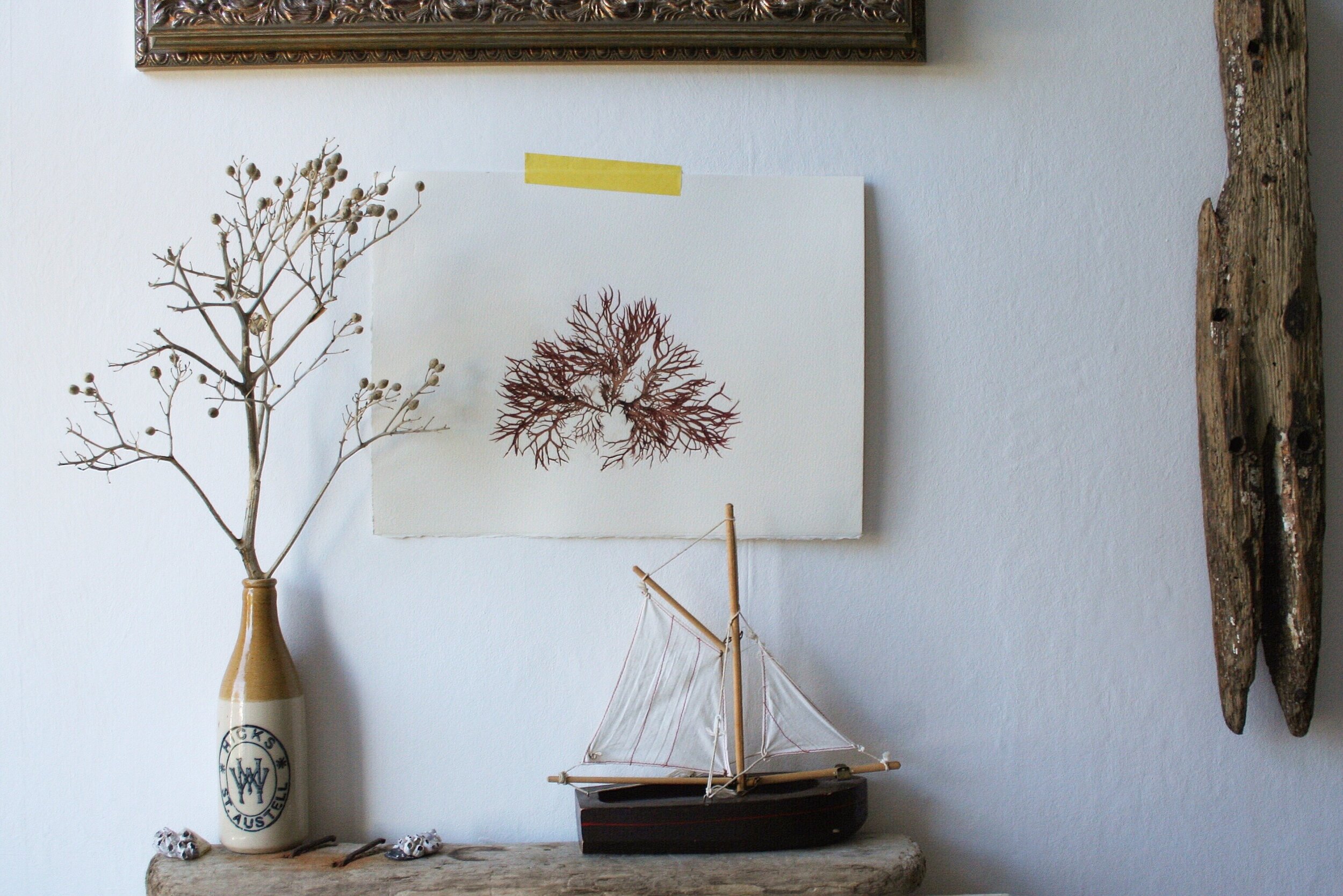Journal: The Victorian Art of Seaweed Pressing
Seaweed pressing is a craft that dates back to the Victorian era and was a popular pastime with Ladies, who would spend afternoons on the beach collecting specimens to artfully preserve. Natural History saw a huge surge in popularity amongst the general public in the 18th Century and a desire to explore, collect, classify or discover new species was an exciting and glamorous pursuit of activities. Botany, archeology and taxidermy were exciting fields of interest but not an appropriate one for a lady, but she was allowed to collect seaweeds. Coastal resort towns were thriving and people were encouraged to take breaks to the coast, for both health and pleasure. So beachcombing and rock pooling became a great (and acceptable) way to forage and look for new seaweeds to add to a collection whilst enjoying your day at the Great British seaside.
Alexander Mark Rossi (United Kingdom, 1840-1916)
Scrapbooking was another massive craft that ladies were encouraged to partake in, and did so with gusto. Family memories, friendship books and holidays were immortalised in an aesthetically pleasing way using photos, paintings, keepsakes, souvenirs and newspaper clippings. Ladies armed with a superior knowledge of the art of scrapbooking found that seaweed pressing naturally fitted well into this format, whilst also fulfilling the nations growing interest in the science behind the natural world. Queen Victoria and George Elliot (pen name of Mary Ann Evans) even adopted this trend, and were apparently avid seaweed collectors.
The Seaweed Collector by Shirley Hibbert
There are many examples of Victorian books bound with pressed treasures from the sea. Following a similar technique to flower pressing, seaweeds actually lend them selves better to pressing because of their gelatinous makeup and adhere themselves like glue to paper. Tools were used to pose the seaweed, unfurling fronds and aligning it creatively on the page. Specimens were looked up and labeled with latin names and perhaps a date and location of where it was gathered. I have a beautiful old book from the 1870's by Shirley Hibbert, who wrote many volumes about flora and fauna. This book describes the biology and makeup of seaweed, the types, its history in our society, how to find and preserve seaweed and lastly lists all the varieties in the UK and has several illustrated colour plates. The most fascinating bit though is that the book belonged to a man called Howard Harris. He signed the book at the front with the date 1879 and has scribbled notes in the margins of many of the pages. There are even his original seaweed pressings carefully preserved between the books leaves, and he has left them next to the beautiful coloured plates to identify them.
To see prints available of my original seaweed pressings please clickity click ‘ere…
Goodbye, until next time…



